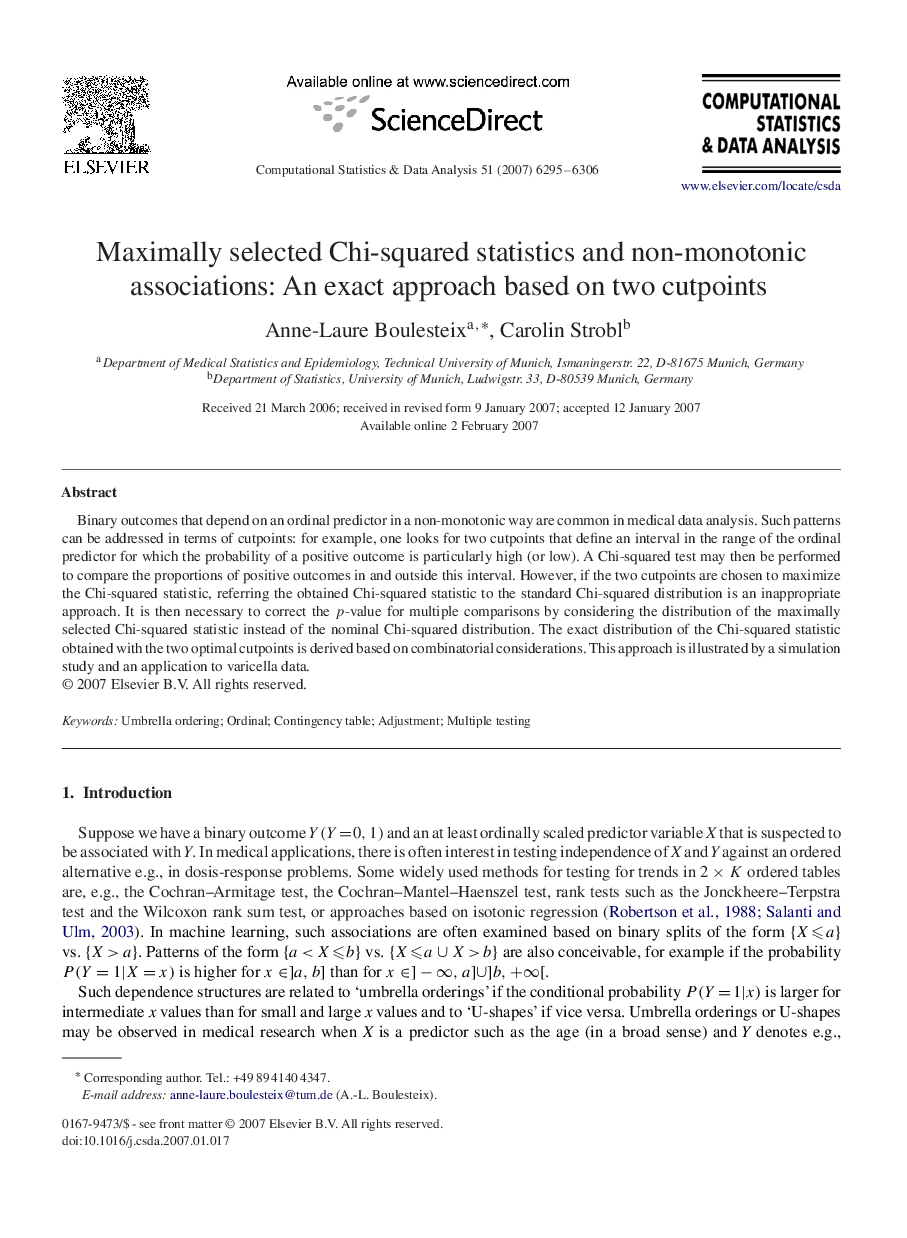| Article ID | Journal | Published Year | Pages | File Type |
|---|---|---|---|---|
| 415559 | Computational Statistics & Data Analysis | 2007 | 12 Pages |
Binary outcomes that depend on an ordinal predictor in a non-monotonic way are common in medical data analysis. Such patterns can be addressed in terms of cutpoints: for example, one looks for two cutpoints that define an interval in the range of the ordinal predictor for which the probability of a positive outcome is particularly high (or low). A Chi-squared test may then be performed to compare the proportions of positive outcomes in and outside this interval. However, if the two cutpoints are chosen to maximize the Chi-squared statistic, referring the obtained Chi-squared statistic to the standard Chi-squared distribution is an inappropriate approach. It is then necessary to correct the pp-value for multiple comparisons by considering the distribution of the maximally selected Chi-squared statistic instead of the nominal Chi-squared distribution. The exact distribution of the Chi-squared statistic obtained with the two optimal cutpoints is derived based on combinatorial considerations. This approach is illustrated by a simulation study and an application to varicella data.
